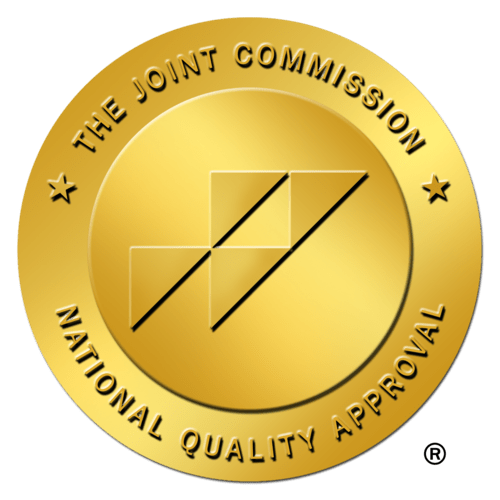
Hospitals across the United States are having a relatively easier time coping with COVID-19’s third wave due to advances in treatment and public health measures. However, nurse staffing shortages remain a chronic issue for healthcare organizations of all sizes.
During a panel hosted by advisory firm CohnReznick LLP, physician group and outpatient services executives cited staffing issues as the top concern, above infection prevention, PPE costs, and lowered capacity.
With more than 50% of the nursing workforce over age 50, more than one million of these critical workers will retire by 2030 according to an HRSA report. Add to that faculty shortages, ongoing stress and burnout, and a pandemic, and you have one unsustainable healthcare dilemma.
To accommodate for the shortage, healthcare organizations have had to change their policies around mildly symptomatic clinicians (per CDC guidelines) or reduce services provided. In the Rocky Mountains and Great Plains, some healthcare organizations are considering pausing elective surgeries—a major revenue stream.
What’s behind the current staffing shortage?

Working parent challenges
Many clinicians are parents, too. They may have trouble finding (and affording) daycare. Or, they have to oversee school-age children who are remote learning part or all of the school week. Single parents or parents with a spouse that works outside the home may have a hard time committing to a full-time nursing position.
Burnout
While the full mental health toll of COVID-19 has not yet been studied, one cross-sectional survey among New York healthcare providers gives an indication of the impact. Of the 657 physicians, nurse practitioners, nurses, and other providers surveyed, 57% screened positive for acute stress, 48% showed depressive symptoms, and 33% screened positive for anxiety symptoms.
Triggered by these feelings, nurses and other clinicians may either quit or take positions at hospice care facilities, in home health, or in outpatient centers.
Fear
Many nurses quit or changed jobs this year out of fear of contracting the virus. When the pandemic broke out in March 2020, more than 30 of Southwest Georgia Regional Hospital’s 200 employees quit either out of fear of developing COVID-19 or because they had already caught the virus. The hospital closed in October.
Although we have a better understanding today of the virus and how it spreads, nurses and clinicians may still opt out for health reasons. For example, if an individual cares for an older loved one or their physical health puts them at higher risk of COVID-19 complications, they may choose a different work environment.
Disconnect between CDC guidelines and staffing models
In July, the CDC issued guidelines to help healthcare facilities mitigate staffing shortages. Among them, the agency recommended providers develop plans to allow asymptomatic workers with unprotected SARS-CoV-2 exposure to continue to work. Mildly symptomatic COVID-19-positive individuals could return to work, but they could not be involved in a direct care setting or work around colleagues.
While these guidelines allow more clinicians to return to healthcare site, it makes the process of filling vacant shifts more complicated, adding stress to nursing managers. It also complicates the team staffing model. If a team member develops mild symptoms, but they can’t work directly with their team, where does the manager assign that person? Does a healthcare provider have enough available, similarly qualified clinicians to fill in for a team member that becomes ill?
Disconnect between CDC guidelines and staffing models
In July, the CDC issued guidelines to help healthcare facilities mitigate staffing shortages. Among them, the agency recommended providers develop plans to allow asymptomatic workers with unprotected SARS-CoV-2 exposure to continue to work. Mildly symptomatic COVID-19-positive individuals could return to work, but they could not be involved in a direct care setting or work around colleagues.
While these guidelines allow more clinicians to return to healthcare site, it makes the process of filling vacant shifts more complicated, adding stress to nursing managers. It also complicates the team staffing model. If a team member develops mild symptoms, but they can’t work directly with their team, where does the manager assign that person? Does a healthcare provider have enough available, similarly qualified clinicians to fill in for a team member that becomes ill?
How to boost your facility's nursing workforce during COVID-19

Although nurse staffing and scheduling issues are complex any year, COVID-19 has made the process even more challenging for managers. They spend more hours per day on the phone or leaving messages with staff to fill vacant shifts. All this extra time spent on routine tasks leaves less time for managers to focus on their core competencies, which impacts operational efficiency.
Meanwhile, nurses available for work either don’t know where vacancies lie or don’t find out about them soon enough. Highly sought-after talent goes unused.
The following technology tweaks can help managers alleviate these communication breakdowns.
Automate as much as possible
In an era when we can buy a car through a mobile app, a skilled manager should not have to waste time making repetitive telephone calls. A cloud-based platform with mobile app like CareRev allows you to optimize your internal resource pool with a few clicks.
How does it work? Simply log in and post shifts to your internal staff. Employees instantly get a notification and sign up for shifts that fit their schedule. All that without picking up the phone or managing dozens of emails.
Maintain balance
Healthcare organizations with multiple hospitals and clinics often face balance issues: one facility has too many nurses for the demand while another can’t keep up with a surge. This imbalance often stems from outdated technology.
A cloud-based staffing platform gives managers a real-time view of staffing overages and shortages across facilities. Simply notify idle staff of the need across town (or across the street) and let them fill your staffing gaps. Optimizing your internal float pool reduces labor costs because you eliminate idle hands.
Tap into your local talent pool
During surge periods or times of severe staff shortage, you may need to call for backup. Traditional options include hiring travel nurses and/or contracting with staffing companies. Travel nurses are expensive and typically request at least 13-week contracts, and staffing companies come with their own inefficiencies. Neither one of those options may suit your needs or your budget.
An app-based system like CareRev lets you reach out to nursing assistants, RNs and other clinicians as needed, whether it’s for one shift or one month. And it’s not an either/or situation. The app shifts to your local pool of qualified candidates after you’ve exhausted your internal resources. These are fully vetted, per diem professionals ready and willing to work.
Review impactful analytics
You can’t manage what you can’t measure. Analytics help you understand how you’ve allocated labor costs over time so you know how to budget moving forward. Data such as fill rates and cancel time help you understand your staffing strategy’s strengths and weaknesses so you can improve along the way. An Excel spreadsheet gives you some data, but cloud-based software with analytics gives you richer detail.
COVID-19 is an ever changing situation and virus. Make the most of available technology to best manage your existing staff and lessen the staffing shortage burden.





